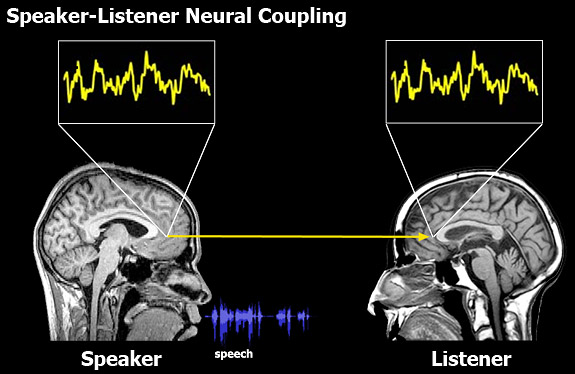Marketing + Video
The Powerful Impact of a Compelling Story on Our Brains
March 7, 2018
5 mins

Traditional tactics are being challenged by the art of storytelling, and for good reason: stories stick.
The “power of story” is becoming an increasingly compelling concept in the realm of marketing and communications—if not the linchpin—sustaining campaigns that succeed and setting them apart from those that crash and burn.
But perhaps you are a skeptic and have not yet bought into the fact that content marketing works. It can be challenging to shift our thinking from a straightforward approach to communicating about goods and services to what can seem like a “touchy-feely” alternative to crafting and delivering a message.
Indulge me for a moment. Think back to your teenage years and tell me what you remember most about being in high school? Do you recall facts and figures or words on a blackboard? Or do you recall the smell of the homemade chocolate chip cookies that home ec sold on Fridays? Or the time Johnny McAllister scored the winning goal at the state championship? Maybe you think of your first love, your first date, your first kiss?
Modern testing and brain scanning technology reveals that our brains light up like fireflies on a hot summer night when information is received from a story rather than straight facts.
We don’t realize it at the time, but as our brains process the stimulation of our senses brought about by a good story, neural networks are being formed that cement these stories into memories we won’t soon forget. In fact, when we hear a story, the neural activity increases fivefold, like a switchboard has suddenly illuminated the city of our mind. According to HubSpot, scientists have a saying that goes like this: “Neurons that fire together, wire together.”
Stories are literally branded into our brains when more neurons are engaged and we remember these stories much better than we remember stats and facts.
When we stop to consider the science behind how our brains respond to stories and experiences, we begin to understand how we can leverage these specific chemical reactions to create a narrative arc about a product, service or message, that makes more than a memorable impression, and moves listeners to respond.
A web design best practice is the strategic placement of a “call to action” or CTA. If your website doesn’t have one, it should—call us and we can help you fix that asap 🙂 But the reason the call to action has become so prominent is that research and studies have proven that, unless a message moves a person to take an action, the message has failed to accomplish its purpose. And people won’t take action on information they forget. This is why understanding the neuroscience behind stories can benefit today’s marketing and communication efforts.
Several scientific studies prove the psychological response between our brains and the stories we love.
There a physical reaction occurs, due to the release of chemicals such as oxytocin—which fires neural networks that form emphatic bonds; and cortisol—which is a stress hormone invoked by distress or suspense that can literally change the shape of the brain. The release of these chemicals in the brain at the same time information is being received makes the information sticky because these chemicals invoke an emotional response that becomes tied to the information received.
One of the most convincing articles we have seen on this subject comes from Berkeley’s Greater Good Magazine. In this article, we see several practical examples of how stories invoke emotions. Taking clips from iconic films like Star Wars and Harry Potter, the author makes the case for how the use of foreshadowing and suspense connects elicits a chemical response resulting in empathy and support for the heroes of these stories. The article also highlights a study conducted by economist Paul Zak who conducted studies linking story to charitable giving, and can even predict with 80% accuracy whether or not a story will move a listener to make a donation.
If you want to take an even deeper dive into the neuroscience of storytelling, this article on the concept of “neural coupling” takes a step further to demonstrate the power of story to establish trust between the storyteller and the listener.

In this series we will continue investigating the power of story and make the case for incorporating storytelling mechanics into marketing strategies. We hope you will follow along and see for yourself just how sticky stories can be when integrated with the facts and details you want your target audience to remember, moving them to take action.
